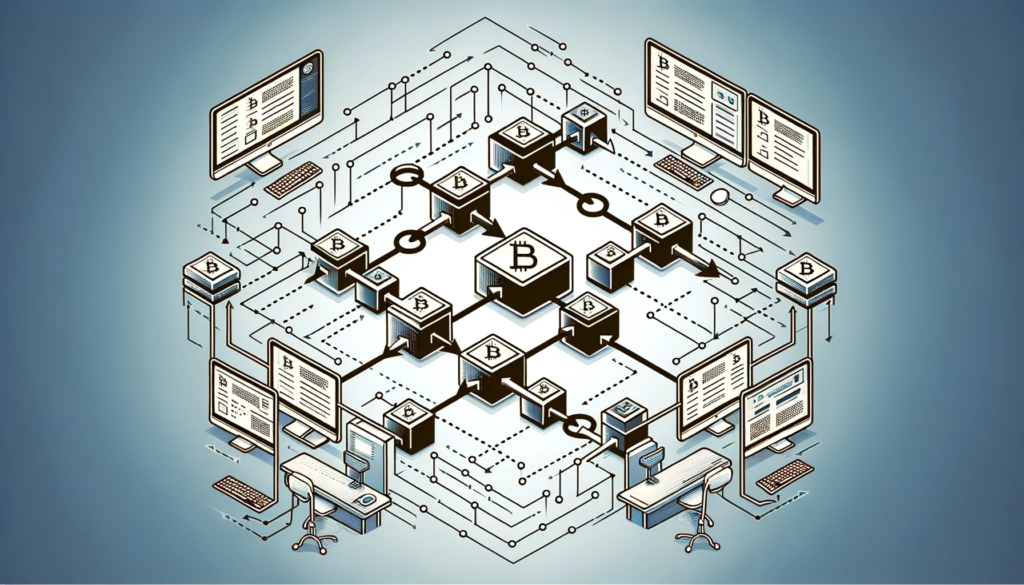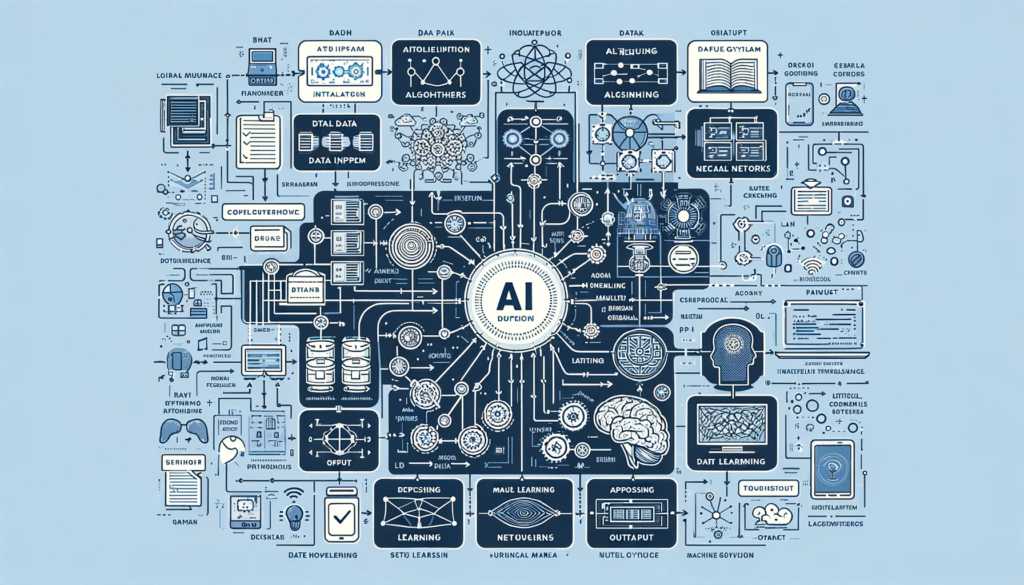Blockchain & AI
Blockchain and Artificial Intelligence (AI) are two distinct but increasingly interlinked technological paradigms that have the potential to significantly impact various business sectors.
Blockchain Technology
Blockchain is a system of recording information in a way that makes it difficult or impossible to change, hack, or cheat the system. A blockchain is essentially a digital ledger of transactions that is duplicated and distributed across the entire network of computer systems on the blockchain. Each block in the chain contains a number of transactions, and every time a new transaction occurs on the blockchain, a record of that transaction is added to every participant’s ledger.

Key Characteristics of Blockchain
- Decentralisation: Instead of being stored in one central location, copies of the blockchain are held across a network of nodes, making it highly resistant to censorship and outages.
- Transparency: Most blockchains are completely open to anyone, meaning that transactions can be verified by any user.
- Immutability: Once data has been added to the blockchain, it is nearly impossible to change, which is crucial for trust and security.
- Security: Blockchain uses various cryptographic techniques to secure transactions and control the creation of new blocks.
- Consensus Algorithms: These are protocols that help align the interests of all network participants, often used to validate transactions.
Common Use Cases
- Supply Chain Management.
- Financial Services.
- Manufacturing.
- Food Production.
- Intellectual Property and Royalties.
- Education
Artificial Intelligence (AI)

AI refers to the simulation of human intelligence in machines that are programmed to think like humans and mimic their actions. This can apply to any machine that exhibits traits associated with a human mind, such as learning and problem-solving.
Key Components of AI
- Machine Learning (ML): Algorithms that enable software to become more accurate in predicting outcomes without being explicitly programmed to do so.
- Natural Language Processing (NLP): Enables machines to understand and interpret human language.
- Robotics: Machines capable of carrying out a complex series of actions automatically.
- Computer Vision: Enables machines to interpret and make decisions based on visual information from the world around them.
Common Use Cases
- Personal virtual assistants (like Siri and Alexa).
- Traffic predictions and autonomous vehicles.
- Fraud detection in financial system.
- Personalised recommendations in shopping.
- Advanced diagnostics and personalised medicine.
Contact
Office: +44 (0)1256 592997
[email protected]